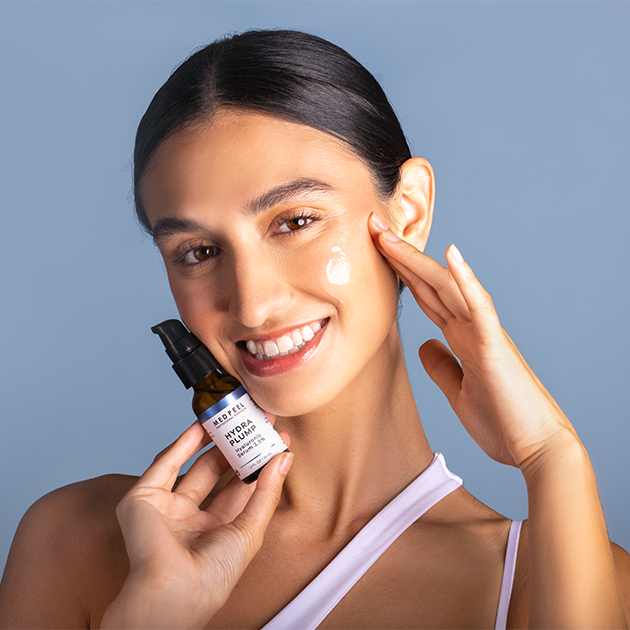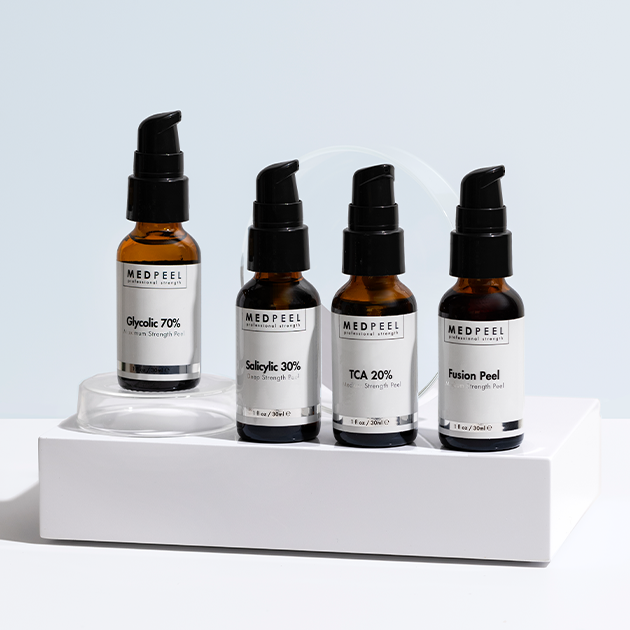Chemical peels involve applying a gentle acid mixture to the face to remove top layers of the skin, revealing smooth and improved skin texture. Furthermore, chemical peels can reveal new skin, stimulate collagen growth, and improve skin issues like acne scarring.
Chemical peels help with acne scarring by smoothing the skin surface and reducing hyperpigmentation. Click here to learn more about what chemical peels work best with different skin types. How effective they are will depend on the severity and type of acne scarring you have.
There are basically two types of acne scarring:
-
Atrophic - These types of acne scars create indents in the skin’s surface. They are a result of new tissue not being created when the acne lesions healed. Depending on the severity of these scars, they may require chemical peels over a course of months or years and may not be eliminated fully but definitely improved upon through the use of chemical peels.
- Hypertrophic - These are scars created during the acne healing process when there is excess collagen production causing the appearance of raised skin. The most extreme of this type of scarring is known as a keloid. Unfortunately, because chemical peels are typically not strong enough, these types of scars can not be treated with chemical peels.
What are the best chemical peels for acne scarring?
Chemical peels are divided into three basic strengths and can help resurface the skin based on the severity of your acne scarring:
-
Light Chemical Peels - Light Chemical Peels, like Medpeel’s Light Strength Chemical Peels, are best for sensitive skin or a new user who is looking to achieve results with minimal to no downtime. With multiple treatments, these peels smooth mild scarring and reverse hyperpigmentation.
-
Medium Chemical Peels - Medium Chemical Peels, like Medpeel’s Medium Strength Chemical Peels, are best for users that have non-sensitive skin.
They generate quicker results than a light peel and provide mild to moderate downtime.
- Deep Chemical Peels - Deep Chemical Peels, like Medpeel’s Deep Strength Chemical Peels, consist of the highest acid percentage in a given category. Deep peels are generally not recommended for acne scarring.
Overall, there are four common chemicals used in chemical peels to choose from based on the severity of your scarring and skin type:
-
Glycolic Acid - Is the most popular in treating acne scars. It can reduce the appearance of atrophic scarring, smooth out the skin surface, and reduce hyperpigmentation. Although they are safe for all skin types, it’s recommended that darker skin tones not use them too frequently to avoid skin discoloration.
-
Salicylic Acid - Promotes collagen production while exfoliating the skin to improve skin texture. Although salicylic acid is great for treating mild scarring, it isn’t as effective for deep atrophic scars.
-
Lactic Acid - Is a weak acid that dissolves the very top layer of the skin to reveal new skin beneath. Lactic acid can fade hyperpigmentation and smooth skin. It’s safe for all skin types, including dry and/or sensitive skin.
- Trichloroacetic acid - Also known as a TCA peel, this type of chemical peel can be used to treat hyperpigmentation and atrophic scarring.
Although chemical peels can’t treat all types of acne scars, they can noticeably improve skin appearance and texture over time.
Chemical peels, like Medpeel, that you can apply at home can provide excellent results provided that you choose the best chemical peel for your particular type of acne scarring and skin type.



